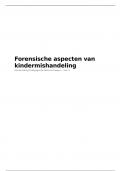Exam (elaborations)
Test Bank - Clinical Manifestations and Assessment of Respiratory Disease, 9th Edition (Des Jardins, 2024), Chapter 1-45 | All Chapters
Test Bank - Clinical Manifestations and Assessment of Respiratory Disease, 9th Edition (Des Jardins, 2024), Chapter 1-45 | All Chapters
[Show more]












